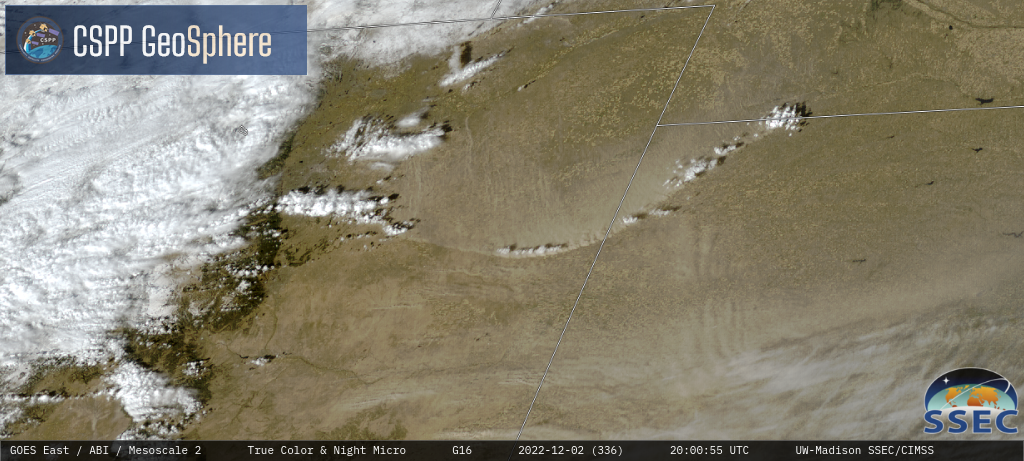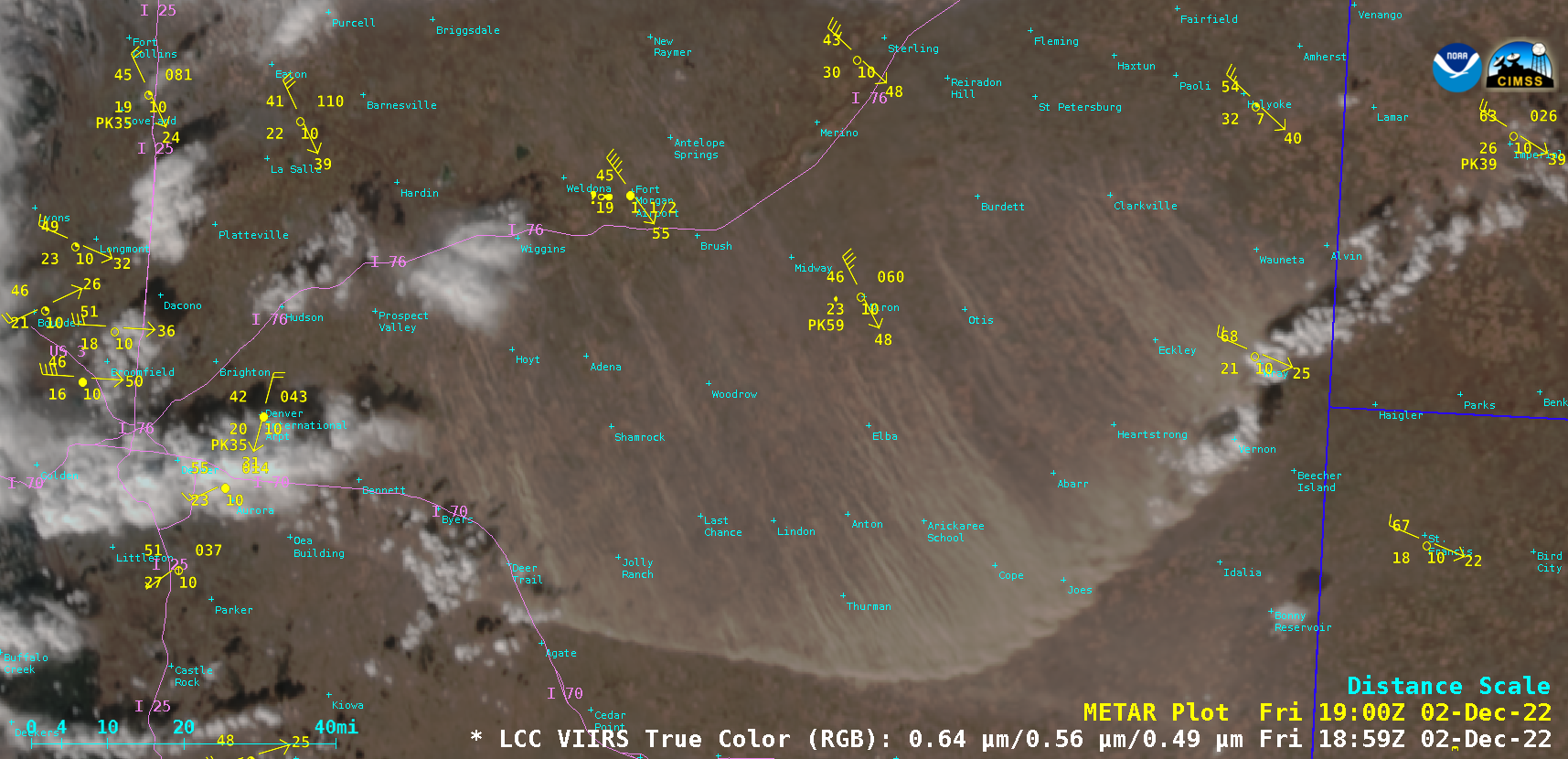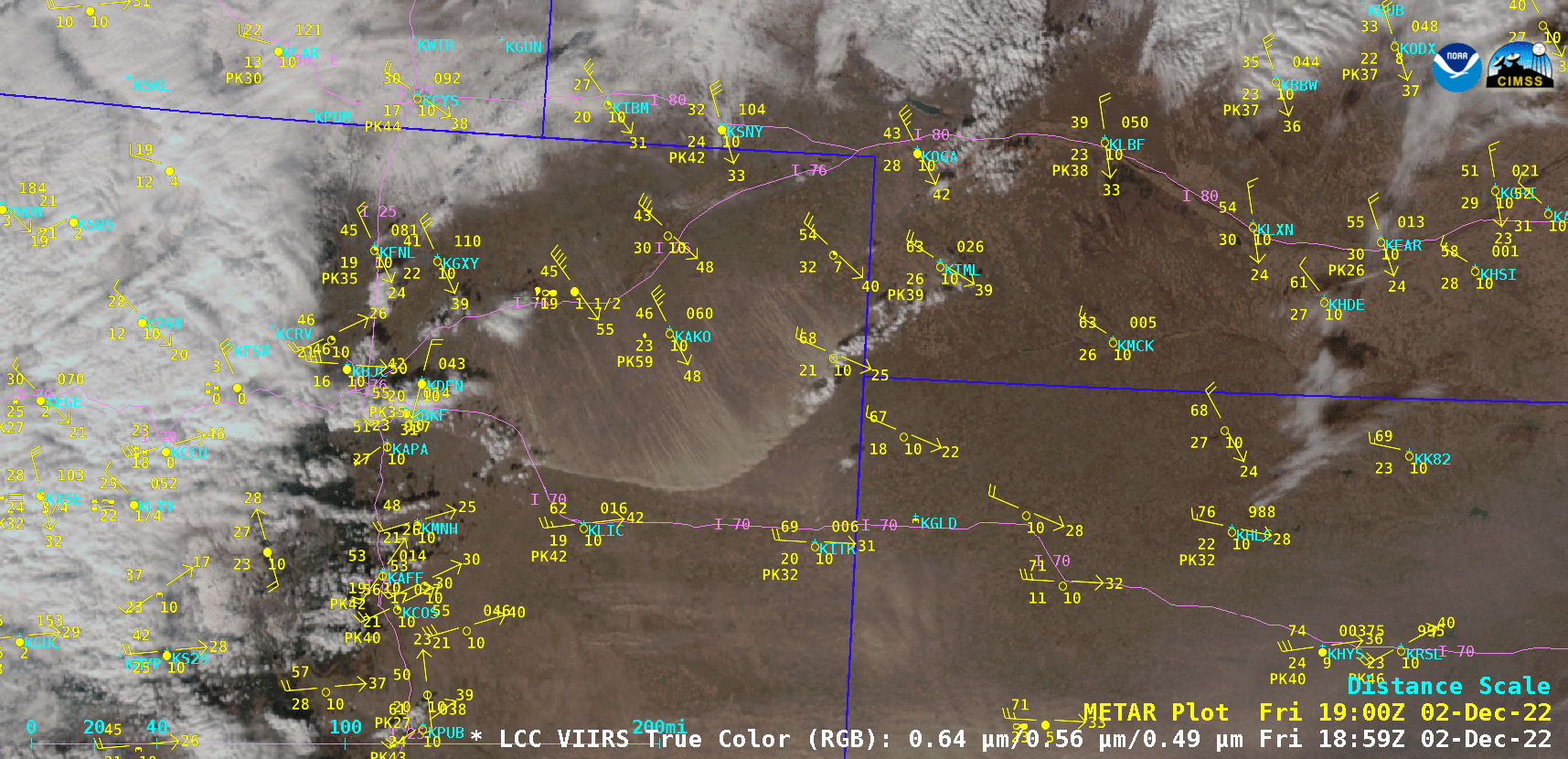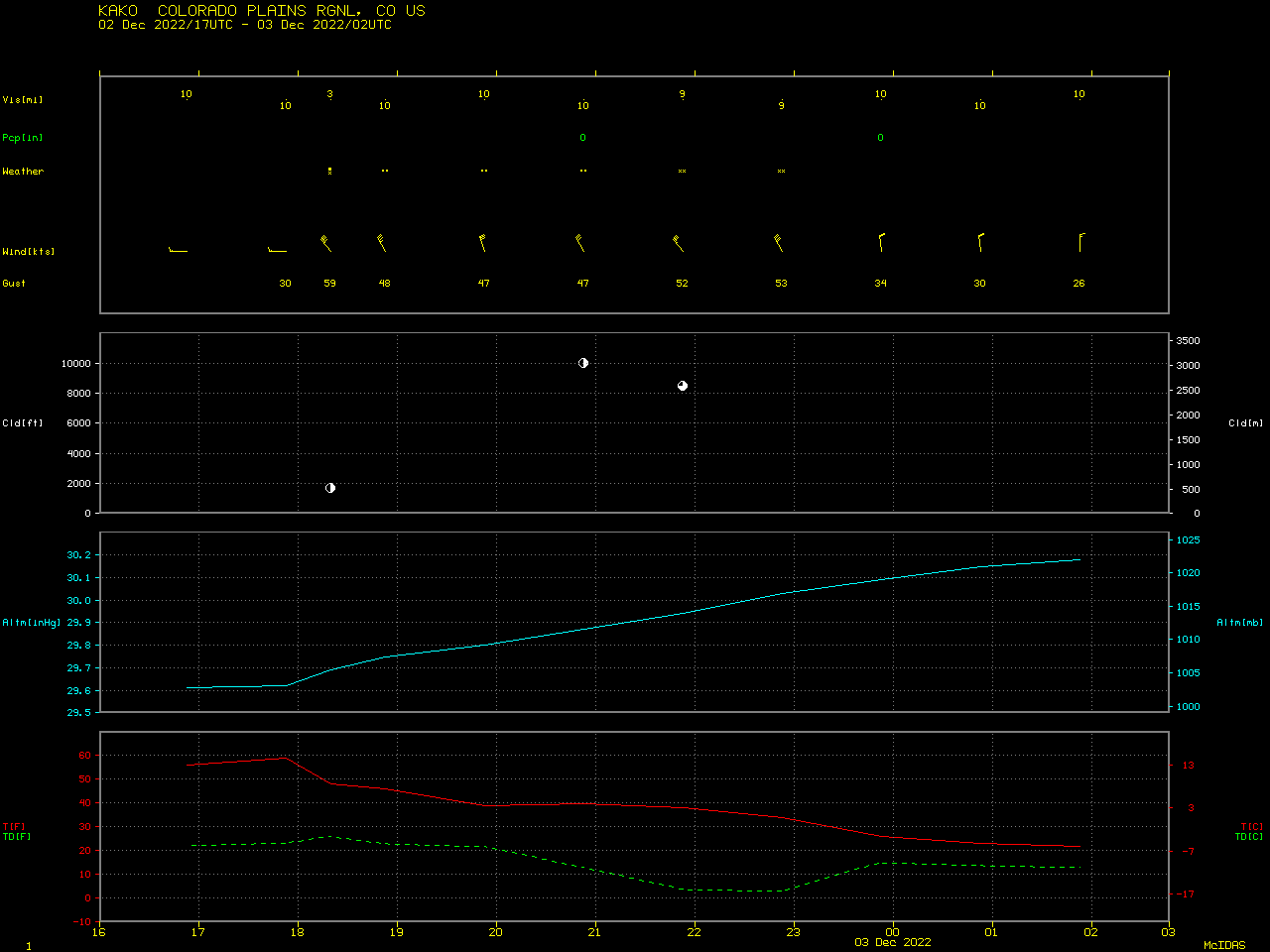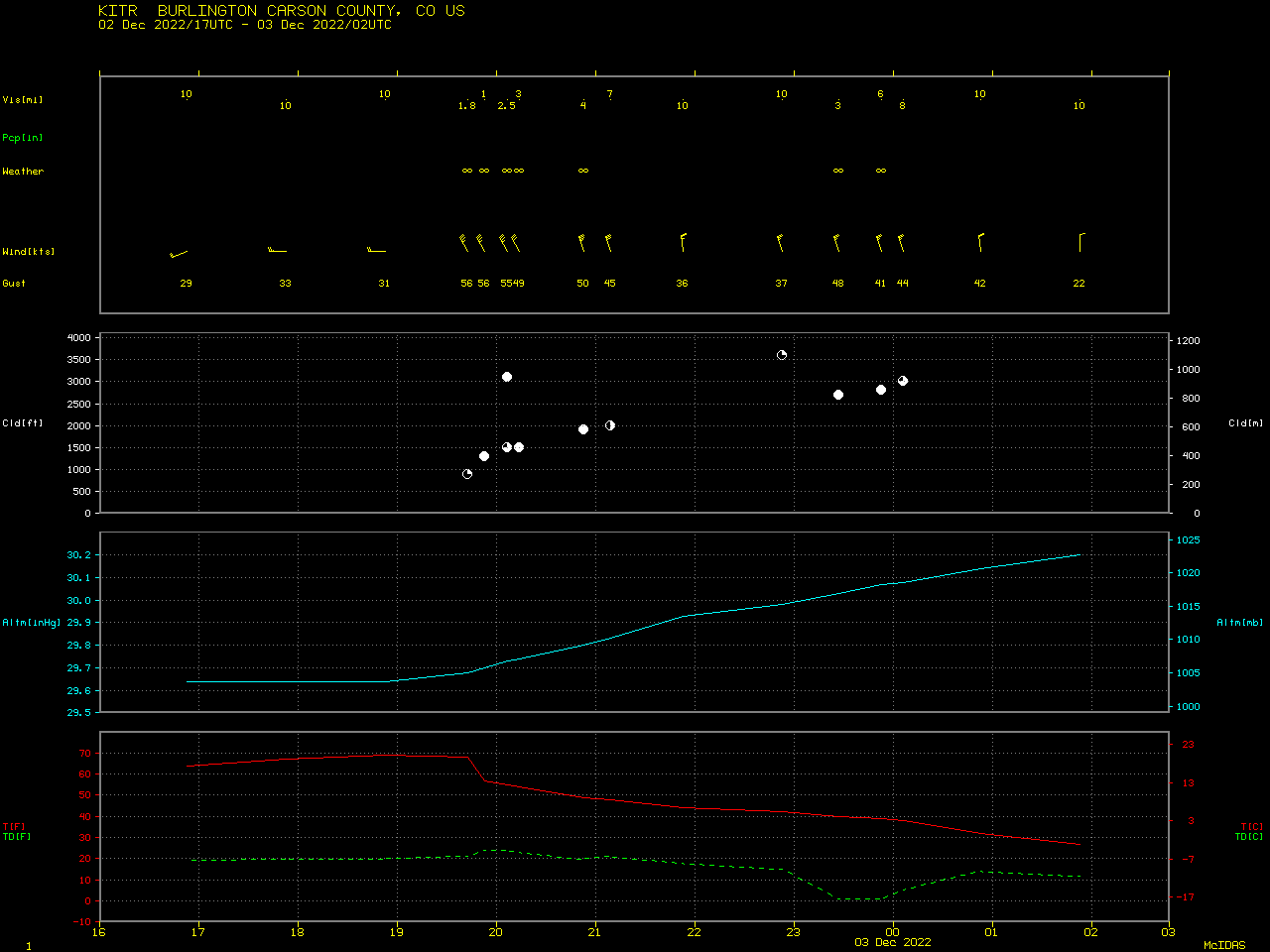Blowing dust across parts of Colorado, Nebraska and Kansas
1-minute Mesoscale Domain Sector GOES-16 (GOES-East) True Color RGB images from the CSPP GeoSphere site (above) showed blowing dust (shades of tan) along and in the wake of a strong cold front that was moving southward across the High Plains on 02 December 2022. A Suomi-NPP VIIRS True Color RGB image valid at 1905 UTC (above) provided a higher-resolution view of the blowing dust. About an hour prior to this image time, the peak wind gust at Akron, Colorado was 59 knots (68 mph). A larger-scale view of 3 consecutive VIIRS True Color RGB images from Suomi-NPP and NOAA-20 is shown below. The data used to create these VIIRS images were downloaded and processed using the SSEC/CIMSS Direct Broadcast ground station. 1-minute GOES-16 Dust RGB images (below) include plots of GOES-16 Derived Motion Winds (DMW) within the 775-900 hPa layer — these DMWs indicated that the airborne dust (brighter shades of pink in the RGB images) was moving southeastward at speeds of 40-52 knots (46-60 mph), in general agreement with the surface wind speeds. This blowing dust reduced the surface visibility to 1-2 miles at some locations. Peak wind gusts across northeastern Colorado are listed here.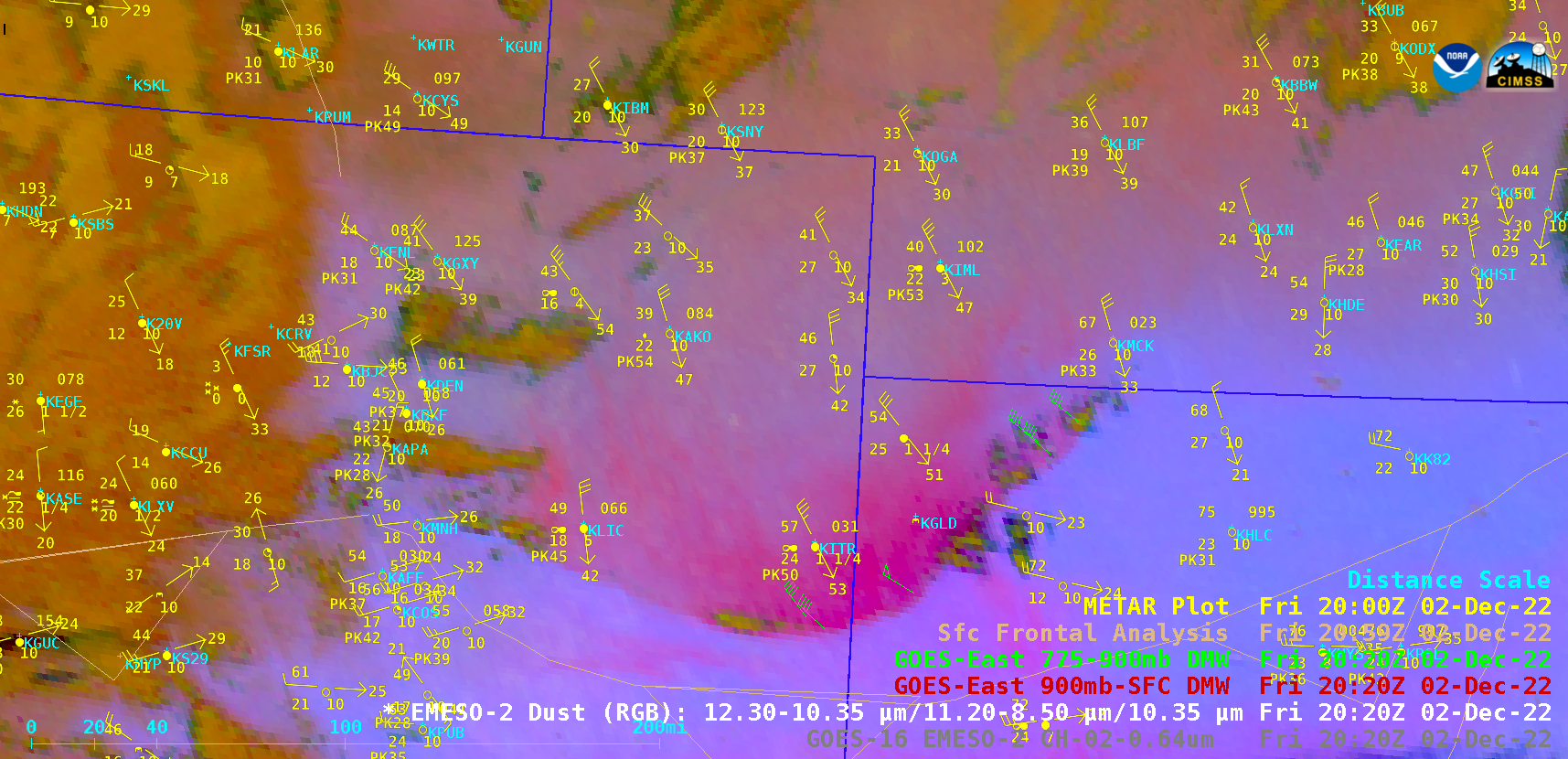
GOES-16 Dust RGB images, with GOES-16 Derived Motion Winds plotted in green and hourly surface reports plotted in yellow [click to play animated GIF | MP4]


